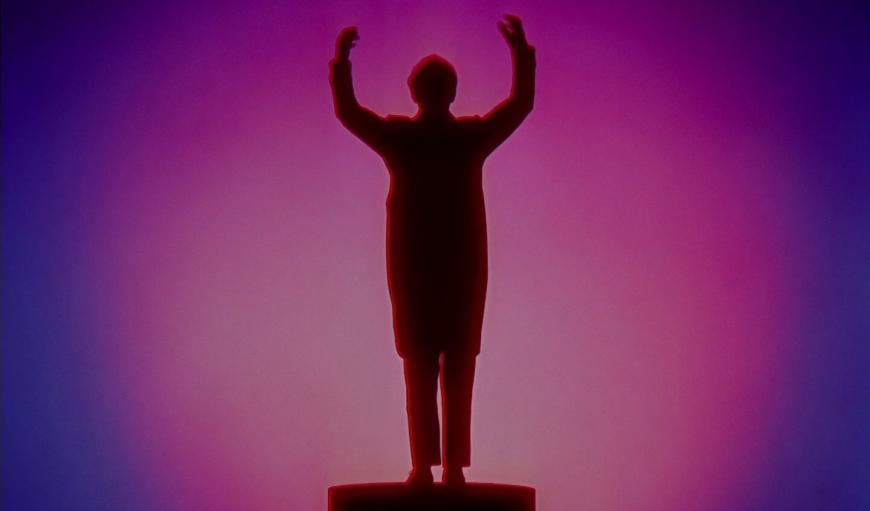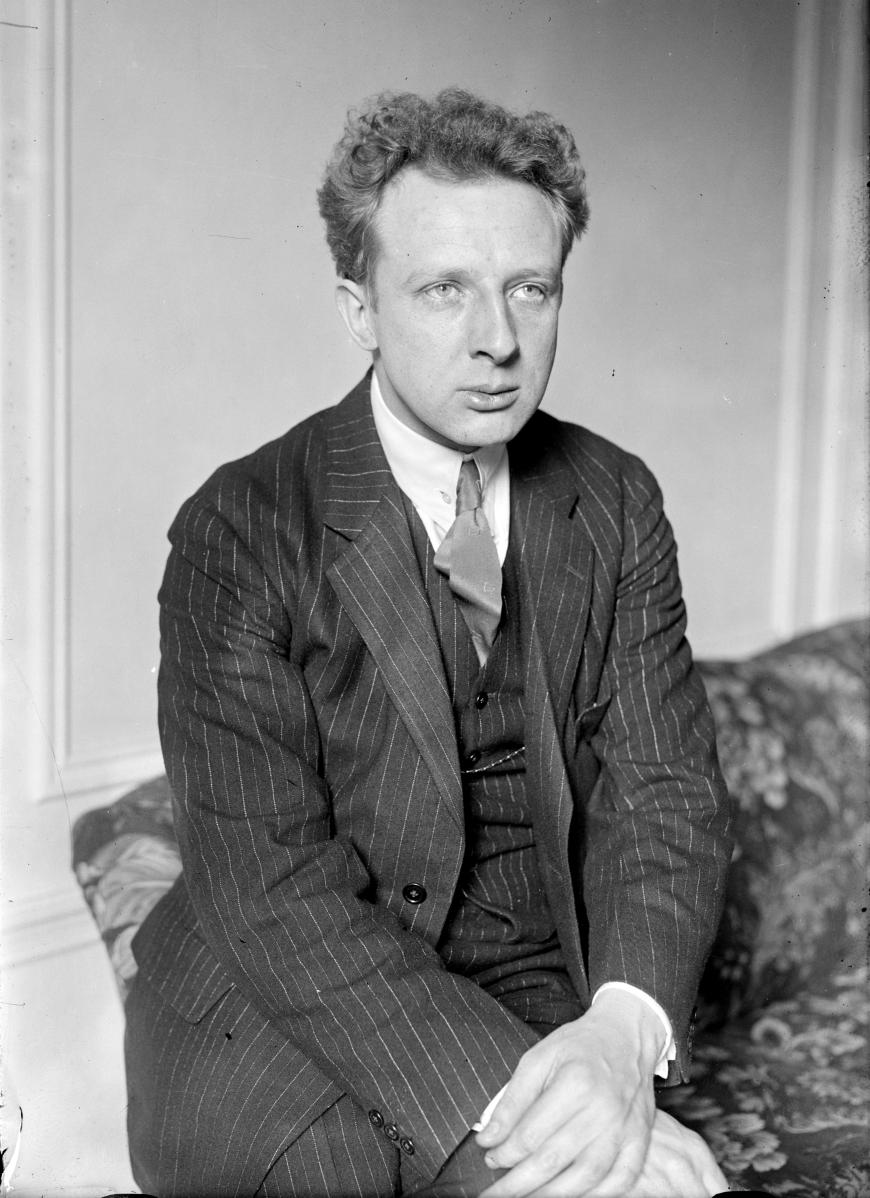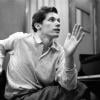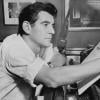
When the name Leopold Stokowski is mentioned, this is the first thought that comes to my mind: I immediately flash onto that 1949 cartoon “Long-Haired Hare,” in which Bugs Bunny struts pompously onto the stage of the Hollywood Bowl wearing a white wig and tails, and the orchestra musicians whisper to each other in breathless awe, “Leopold! Leopold! Leopold!”
Yes, it’s a parody of the strong-willed, flamboyant conductor in the service of a parable where popular music triumphs over the stuffy old classics, but it’s also an indication of how well known Stokowski was to the general public at that time. He was a celebrity, dating movie stars and heiresses and appearing in films like Carnegie Hall, One Hundred Men and A Girl, and most famously as himself in Walt Disney’s Fantasia. That sort of fame, though, was poison to his reputation as a classical musician in many august quarters — that and his urge to impose his own ideas upon supposedly sacrosanct scores. Ultimately, he outlived his fame, which faded during his last quarter century, even as he kept on working right up to the day he died in 1977 at age 95.

While not exactly a forgotten man — certainly not among classical record collectors — Stokowski’s profile today ought to be higher than it is if for no other reason than his compulsive urge to be on the cutting edge. The list of works he gave in their world premieres or U.S. premieres is staggeringly long; only Serge Koussevitzky in Boston rivaled what Stokowski was doing for new music in Philadelphia.
Stokowski was the first conductor to take recordings seriously, trying from the outset, in 1917, to improve the primitive conditions of acoustical recordings. He became the first to make an electrical orchestral recording in 1925 (Camille Saint-Saëns’ Danse macabre) and the first to make a long-playing record in 1931 (Beethoven’s Symphony No. 5). He experimented with stereo in the early 1930s and surround sound in Fantasia. He reseated orchestras in the studio in order to obtain better results. He kept at it all the way into the quadraphonic era of the 1970s, just missing digital recordings by a couple of years.
And there is the Stokowski sound — a lush, sweeping, infinitely colored combination of timbre, balance, and unending line generated by free string bowing — which can be traced over a period of 60 years of recordings. Too many highlights — and some still-controversial lowlights — to adequately deal with, but we’ll give it a shot:
Schoenberg: Gurre-Lieder — The Philadelphia Orchestra, Princeton Glee Club, Mendelssohn Club, Fortnightly Club, and soloists (RCA, 1932)
Talk about audacious gambles. How about performing, recording, and releasing this last gigantic gasp of pre-World War I Romanticism with 532 performers on 14 expensive 78s at the height of the Great Depression? For decades, this was just about the only way you could hear this work — and Stokowski’s lush interpretation still holds up in surprisingly listenable 1932 sound. Available via YouTube.
J.S. Bach transcriptions (various)
Stokowski made luscious orchestral transcriptions of Bach compositions that introduced many to the composer’s music but were denigrated as sacrilegious and obsolete even before the period-instrument folks took control of Baroque performance. Undaunted, Stokowski recorded several of them many times over half a century as his transcriptions evolved and recording techniques improved. He treated the orchestra like the organist that he once was — and his transformations make grand listening on their own terms. Try the stereo anthologies on RCA and Decca for the best sound, or sample vintage items like the great 1927 Toccata and Fugue in D Minor in Philadelphia.
Shostakovich: Symphony No. 11 (“The Year 1905”) — Houston Symphony (Capitol/EMI, 1958)
Stokowski was one of the first Western conductors to recognize the genius of Dmitri Shostakovich, whose Symphonies Nos. 1, 3, 6, and 11 received their first American performances under the maestro — and he would have introduced No. 7 if Arturo Toscanini hadn’t snatched the U.S. premiere away. Probably Stokowski’s best shot was his electrifying 1958 recording of No. 11; few since have been able to conjure the magical stillness of the opening movement, the shocking violence of the Jan. 9 massacre alluded to in the title, and the unity of the entire score as completely as this performance.
Stravinsky: Firebird Suite (1919 version) — Berlin Philharmonic (Capitol/EMI, 1957)
The Firebird Suite had been a staple of Stokowski’s repertoire almost from the beginning of its existence. He first recorded it in 1924 on two acoustical 78s when it was still considered contemporary music — and he went on to rerecord it seven times, his interpretations broadening and growing more indulgent before finally shedding some idiosyncrasies. My choice would be the ravishing 1957 rendering with the Berlin Philharmonic, which in one CD incarnation was coupled with an extremely sensuous rendering of Carl Orff’s Carmina Burana in Houston at a time when it was barely known in America.
Ives: Symphony No. 4 — American Symphony Orchestra (Columbia, 1965)
In a career bursting with premieres, this was one of the last and biggest. Charles Ives’s colossal, world-embracing Symphony No. 4 had finally been pieced together and edited some 40 years after Ives completed it — and Stokowski landed the world-premiere performance and recording just after turning 83. With the help of two assistant conductors to keep the colliding orchestra parts together, Stokowski identifies completely with the piece’s modernist, nostalgic, and spiritual elements, and the coda levitates to a celestial level unmatched on recordings until Gustavo Dudamel’s recent set.
Wagner: Orchestral Masterpieces From Der Ring des Nibelungen — London Symphony Orchestra (Decca, 1967)
Well into his 80s, Stokowski continued to experiment with sound, signing on to Decca’s sensation-seeking Phase 4 project, which specialized in heavily multi-miked sonic spectaculars, in the 1960s. In other words, made to order for a compulsively knob-twiddling conductor. There was a 23-CD mega-box that allegedly contained everything Stokowski did with Phase 4 — including some of his most eccentric recordings — that now goes for insane prices online. Better to choose individual albums, like this outstanding Wagner anthology where the Stokowski sound meets its match in high-powered material.
Sibelius: Symphony No. 1, The Swan of Tuonela — National Philharmonic Orchestra (Columbia, 1977)
This was one of Stokowski’s last recordings, made when he was 94, having just signed a CBS contract that would have expired on his 100th birthday. Even in his extreme old age, he could mesmerize this pickup band of principal London players into producing powerful performances full of majesty and mystery. This recording was issued in 1977 on a quadraphonic LP; when heard through an SQ decoder (or Dolby Surround), the spacious sound opened up even more. To the end, Stokowski remained on the cutting edge.
As a supplement, also seek out Glenn Gould’s absorbing audio program Stokowski: A Portrait for Radio, in which the octogenarian conductor emerges as a mystic visionary.




